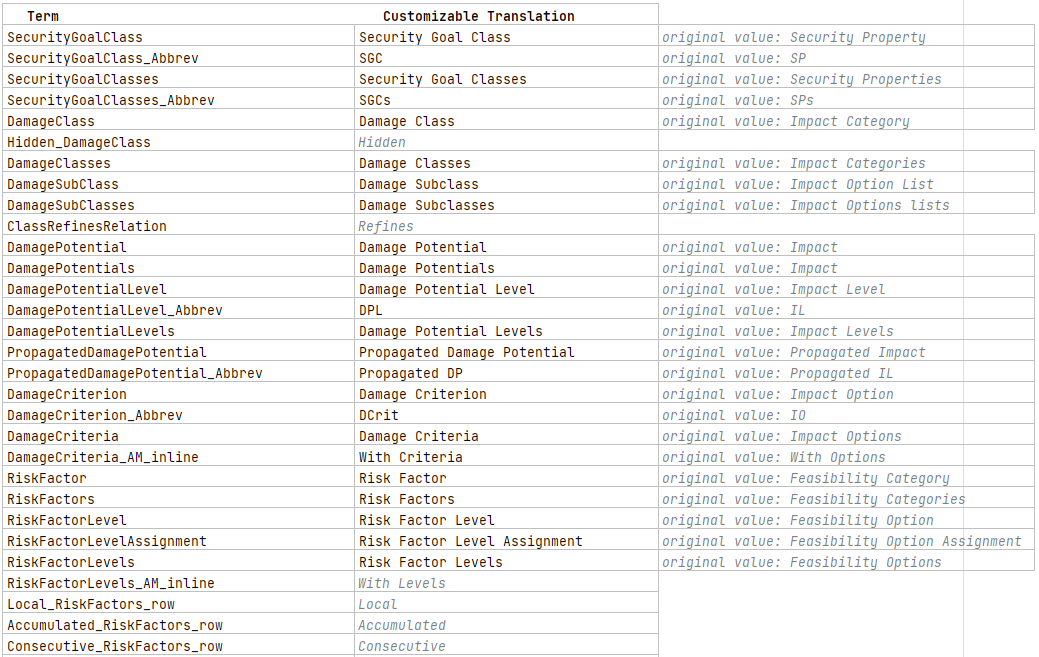Table of contents
Terminology Profiles Copy link to clipboard
Terminology Profiles let you tailor the language used across your project to match the terminology of your domain, industry standards, or team conventions. By defining how key elements are named and presented, you can ensure consistency across your workflows and outputs. The configuration is shared across the project via version control, so it can be edited collaboratively by the whole team—or managed by a designated expert, depending on your workflow.
The Terminology Profile is managed in a dedicated chunk within the Method Configuration model, found in your project-specific Composition module. Each Terminology Profile declares a base profile, which serves as the default source of terminology when no custom terms are defined. To begin customizing, click the “Refresh/Customize” button at the top of the chunk. This action ensures all required libraries are imported and generates placeholder entries for all available terms. From there, you can review and adjust the term definitions to better match the language and conventions used in your domain.
The renaming-option in the Terminology Profile also includes terms used in your Item Definition—for example, if you prefer a different element name for “Channels”—as well as terminology used in the TARA—such as replacing the default term “Control” with one that fits your context better. You can also customize the field names of elements and the prompt phrases shown by assistants, such as the instructional or guiding text for specific element operations. Additionally, the profile allows you to define Name Patterns and Title Patterns, which we will explain in more detail in the following sections.
Example of how a custom terminology profile might look (excerpt):
